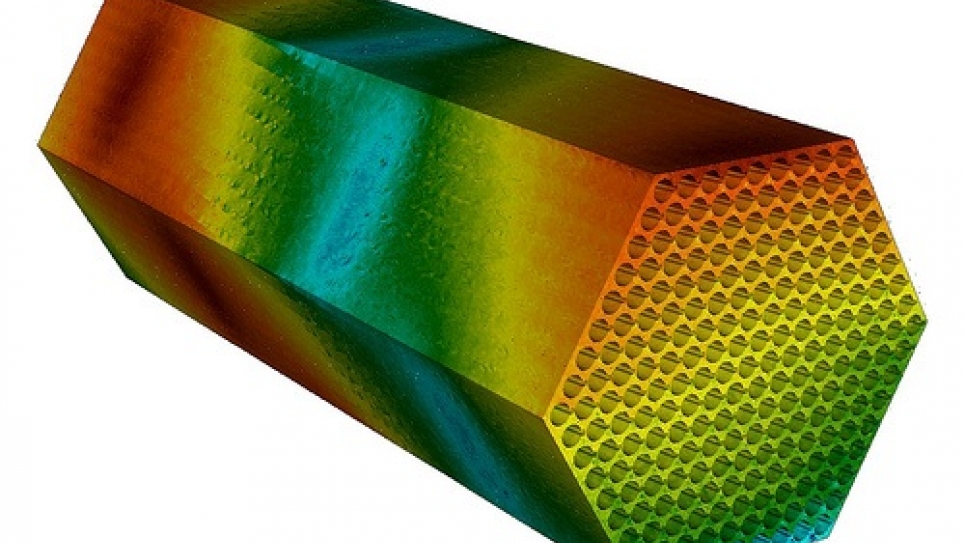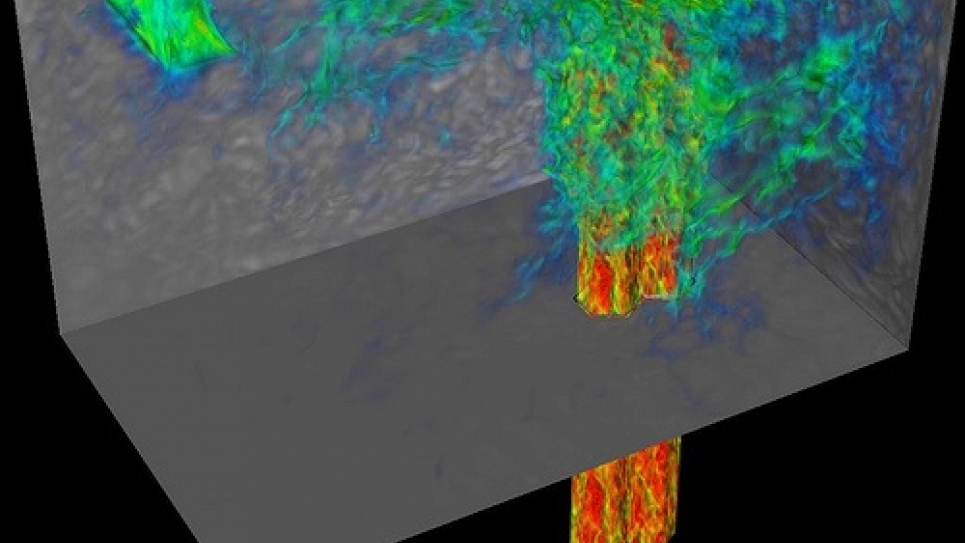
Making Safe, Clean Nuclear Energy Available Globally
As part of the nuclear energy program, the United States is committed to new technologies that will dramatically expand the availability of safe, clean nuclear energy to help meet the growing global energy demand. Liquid-metal-cooled fast reactors are a key component of this strategy in that they permit recycling of nuclear fuel and are expected to be economical sources of power.
Scientific Approach
Through U.S. Department of Energy (DOE) INCITE allocations, researchers are carrying out large-scale numerical simulations of turbulent thermal transport in sodium-cooled reactor cores. These simulations will enable researchers to gain an understanding of the fundamental thermal mixing phenomena within advanced recycling reactor cores, which can lead to improved safety and economy of these pivotal designs.
Results
Argonne and University of Illinois teams are working together to validate the core hydrodynamics large-eddy simulations by comparing highly detailed simulations in similar configurations. On the Blue Gene/P at the Argonne Leadership Computing Facility, the partners are performing simulations of coolant flow in a simplified geometry that allows them to resolve all turbulent motion with no modeling assumptions. These results are being compared to the Nek5000 computations, which simulate only the largest turbulent eddies in the flow. The validated Nek5000 results are being used to benchmark steady- state Navier-Stokes codes that employ turbulence models and to provide input to reactor design codes that require only coarse (mean flow) data. Visualization support for this project is provided by the VisIt group at Lawrence Livermore National Laboratory.
INCITE Contribution
"Computations on the ALCF Blue Gene/P, made possible through a DOE INCITE award, are already yielding important results in the analysis and understanding of reactor core flows, including establishment of turbulent flow entry lengths and subassembly coolant mixing characteristics."
ALCF Contribution
"The range of scales encountered even in a single subassembly has driven the computational requirements for our Nek5000 code to unprecedented levels. The Argonne Leadership Computing Facility has proved essential for undertaking simulations at these scales."
